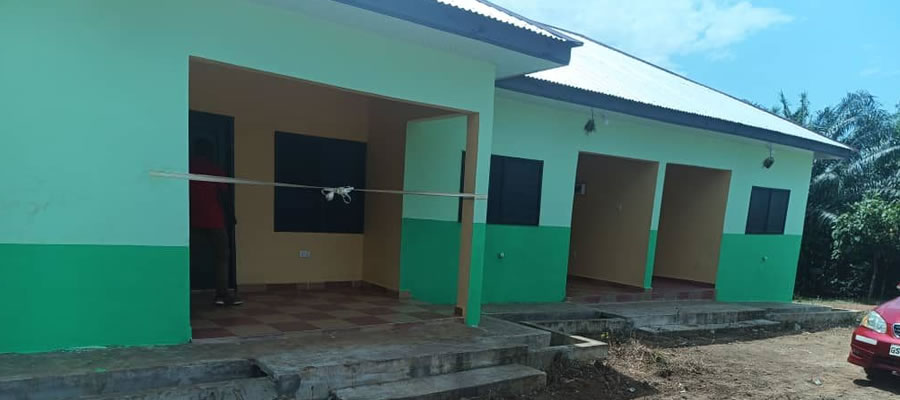

Literacy and Education
Literacy and education are two inseparable factors which influence the social outlook of the population in terms of the appreciation and understanding of issues affecting them. Literacy is defined as the ability to read and write with understanding. Education and literacy bring enlightenment and transformation and in summary, result in human resource development. This section takes a look at the levels of literacy and education in the District. 3.6.1 Literacy Figure 3.2 presents the percent distribution of the literate population 11 years and older in the district.
The figure shows that nearly 70 percent of the population is literate in English and Ghanaian language and 19.2 percent literate in English only. The least is English and French (0.2%). In spite of attempts being made towards encouraging literacy in French, only 0.2 percent of the population 11 years and older are literate in English and French, and 0.4 percent literate in English, French and Ghanaian language.
School attendance
Current school attendance is an indicator of the human resource potential for any society. For this reason, data on the population presently attending educational institutions is significant for human resource planning to sustain improvements to socio-economic conditions in the district. Data on past school attendance also offers an indication of formal education in a society. In a society where few people have attended formal school in the past, there will be limited people with the essential knowledge and skills required for social and economic development. Table 3.9 shows the distribution of past and current school attendance for persons 3 years and older in THLDD by level of education and sex. The Table indicates that a total of 22,589 persons aged 3 years and older in the district are currently attending school. Also, 17,531 have attended school in the past.
Males outnumber females for those who are currently attending school as well as those who have attended school in the past. Majority who are currently attending school are in primary (46.5%), JSS/JHS (19.5%) and kindergarten (18.0%). Less than 2 percent are currently attending tertiary (1.3%), post-secondary (0.3%) and vocational/technical (0.1%). These observed educational trends in THLDD are consistent with national level data which show relatively higher proportion of male in school (although the situation of the female has improved significantly in recent years) and a drop in the proportion attending school, especially among females, at higher levels of the educational ladder.
More than 80 percent have attended JSS/JHS (37.1%), Middle (30.0%) and Primary (16.7%) in the past, and less than 3 percent in the case of tertiary school. For those currently attending school, females are more than males in the three lower levels (nursery, kindergarten and primary) of education and in vocational/Technical institutions. Females are also more than males in only the two lower educational levels - primary and JSS/JHS for those who have attended school in the past. From the middle up to the tertiary level, males are more than females. This reflects the improvement in girl-child education through and civil society efforts since the 1980s, however, more needs to be done at the tertiary education level.
Date Created : 11/29/2017 1:29:22 AM








 facebook
facebook
 twitter
twitter
 Youtube
Youtube
 +233 593 831 280
+233 593 831 280 0800 430 430
0800 430 430 GPS: GE-231-4383
GPS: GE-231-4383 info@ghanadistricts.com
info@ghanadistricts.com Box GP1044, Accra, Ghana
Box GP1044, Accra, Ghana